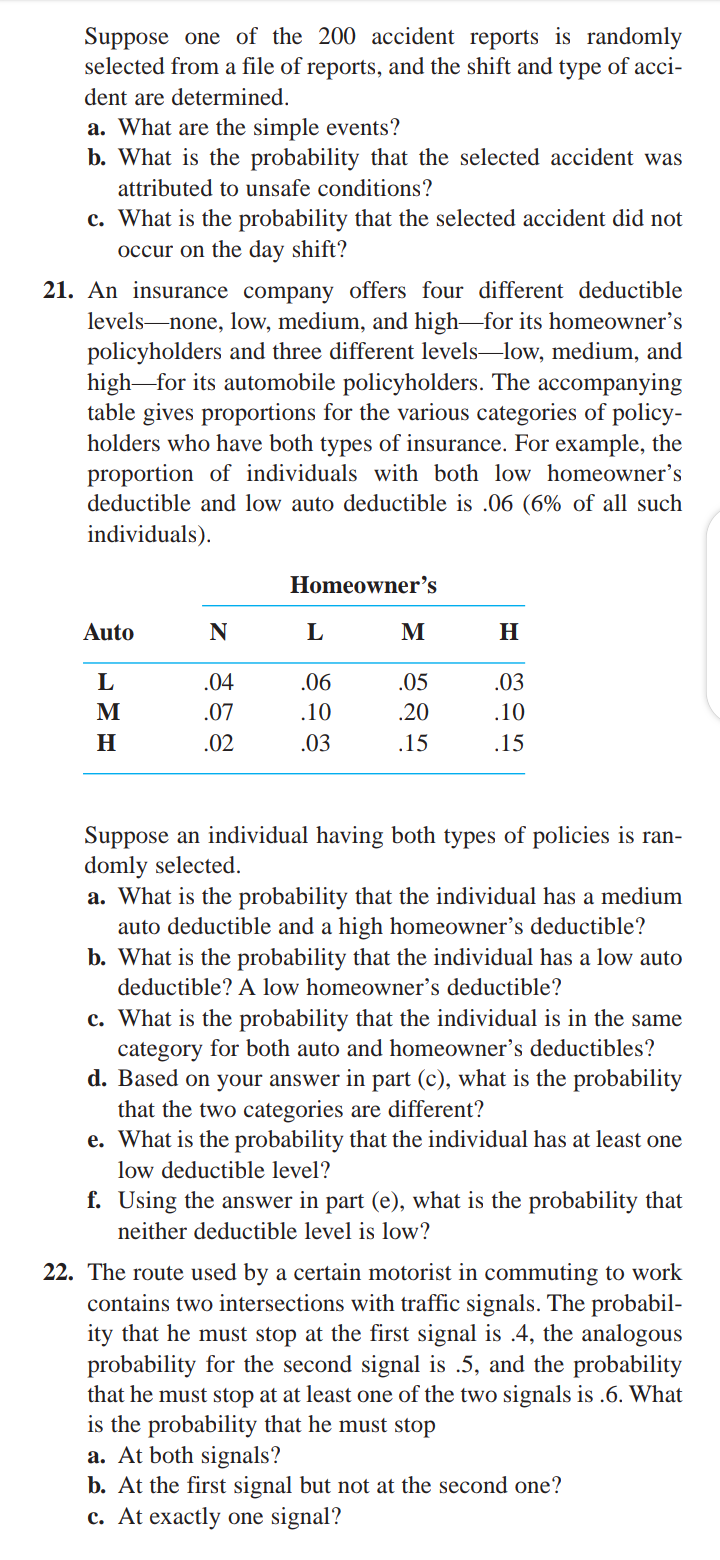An insurance company offers four different deductible levels-none, low, medium, and high-for its homeowner's policyholders and three different levels–low, medium, and high-for its automobile policyholders. The accompanying table gives proportions for the various categories of policy- holders who have both types of insurance. For example, the proportion of individuals with both low homeowner's deductible and low auto deductible is .06 (6% of all such individuals). Homeowner's Auto N M H .04 .06 .05 .03 M .07 .10 .20 .10 H .02 .03 .15 .15 Suppose an individual having both types of policies is ran- domly selected. a. What is the probability that the individual has a medium auto deductible and a high homeowner's deductible? b. What is the probability that the individual has a low auto deductible? A low homeowner’'s deductible? c. What is the probability that the individual is in the same category for both auto and homeowner's deductibles? d. Based on your answer in part (c), what is the probability that the two categories are different? e. What is the probability that the individual has at least one low deductible level? f. Using the answer in part (e), what is the probability that neither deductible level is low?
Compound Probability
Compound probability can be defined as the probability of the two events which are independent. It can be defined as the multiplication of the probability of two events that are not dependent.
Tree diagram
Probability theory is a branch of mathematics that deals with the subject of probability. Although there are many different concepts of probability, probability theory expresses the definition mathematically through a series of axioms. Usually, these axioms express probability in terms of a probability space, which assigns a measure with values ranging from 0 to 1 to a set of outcomes known as the sample space. An event is a subset of these outcomes that is described.
Conditional Probability
By definition, the term probability is expressed as a part of mathematics where the chance of an event that may either occur or not is evaluated and expressed in numerical terms. The range of the value within which probability can be expressed is between 0 and 1. The higher the chance of an event occurring, the closer is its value to be 1. If the probability of an event is 1, it means that the event will happen under all considered circumstances. Similarly, if the probability is exactly 0, then no matter the situation, the event will never occur.

Trending now
This is a popular solution!
Step by step
Solved in 2 steps


